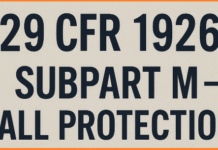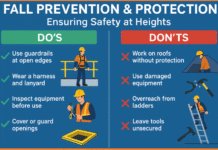Contents
1. Water Fire Extinguisher
- Class of Fire: Class A (Ordinary combustibles like paper, wood, cloth)
- Mode of Action: Cooling
- Description: Water extinguishers work by lowering the temperature of the burning material below its ignition point. They are unsuitable for flammable liquids, electrical fires, or metal fires.
2. Foam Fire Extinguisher
- Class of Fire: Class A and B (Flammable liquids such as petrol, diesel)
- Mode of Action: Smothering and Cooling
- Description: Foam extinguishers form a blanket over flammable liquids, cutting off the fire’s oxygen supply while also cooling the surface. They are not suitable for electrical or metal fires.
3. Dry Chemical Fire Extinguishers
- Mode of Action: Interrupting the Combustion Chemical Reaction (CCR)
a. Ordinary Dry Chemical
- Chemical Composition: Sodium or potassium bicarbonate
- Class of Fire: Class B (flammable liquids), Class C (electrical fires)
- Description: Effective on liquid and electrical fires, these extinguishers interrupt the chain reaction of fire without conducting electricity.
b. Multipurpose Dry Chemical
- Chemical Composition: Monoammonium phosphate
- Class of Fire: Class A, B, and C
- Description: Versatile and widely used, this type tackles combustible solids, flammable liquids, and electrical fires by smothering and interrupting the CCR.
4. Dry Powder Fire Extinguisher
- Class of Fire: Class D (Combustible metals such as magnesium, titanium, sodium)
- Mode of Action: Interrupting the Combustion Chemical Reaction
- Components: Sand, talc, graphite (specific to metal type)
- Description: Not universal for all metal fires. Each powder is tailored to specific metals. These do not work on other fire classes and can be hazardous if used incorrectly.
5. Carbon Dioxide (CO₂) Fire Extinguisher
- Class of Fire: Class C (Electrical fires)
- Mode of Action: Smothering and Cooling
- Description: CO₂ displaces oxygen and cools the burning surface. It leaves no residue, making it ideal for sensitive electronics but ineffective on Class A fires due to quick dissipation.
6. Wet Chemical Fire Extinguisher
- Class of Fire: Class K (Kitchen fires involving oils and fats)
- Mode of Action: Interrupting the Combustion Chemical Reaction
- Component: Potassium acetate
- Description: Specifically designed for high-temperature grease fires, it cools and reacts with the fat to form a soap-like solution, effectively smothering and cooling the fire.
7. Clean Agent Fire Extinguishers
- Class of Fire: Class A, B, and C
- Components:
- FM-200 (Heptafluoropropane, HFC-227ea)
- NOVEC 1230 (PFC – Polyfluorocarbon)
- Mode of Action: Interrupting CCR, Cooling, and Smothering
- Description: These are environment-friendly agents that evaporate quickly, leaving no residue and are safe for sensitive electronics and enclosed areas. They suppress fire without harming occupants or equipment.
Understanding the different types of fire extinguishers and their appropriate applications is crucial for effective fire safety. Selecting the right extinguisher for the right class of fire ensures quick suppression and minimizes damage and risk. Always ensure extinguishers are properly maintained and that individuals are trained in their use.





